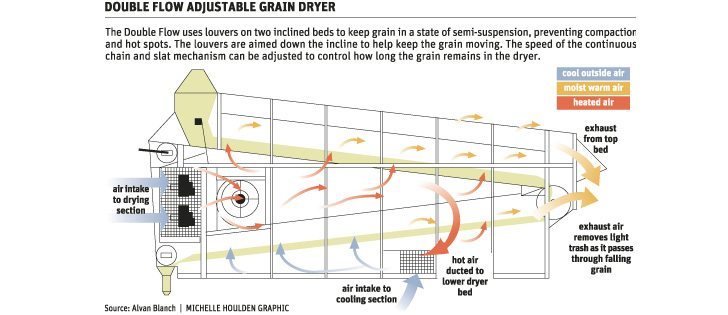Prices of wheat, soybeans and corn are heading down, says an analyst who has been exceptionally accurate in the past year.
But the winter should bring a recovery that will repair some of the damage to prices of these commodities in the American market, and a rising American dollar will mitigate the damage to Canadian farmers.
“I see pressure on grains into early 2010,” said Elliott Wave International futures market analyst Jeffrey Kennedy in an interview.
Kennedy predicts nearby soybean futures prices in Chicago will fall to somewhere above $6 US per bushel, corn to $2 per bu. and Chicago wheat to slightly less than $4 per bu.
Read Also

Alberta cracks down on trucking industry
Alberta transportation industry receives numerous sanctions and suspensions after crackdown investigation resulting from numerous bridge strikes and concerned calls and letters from concerned citizens
On Oct. 5, soybeans were trading near $8.85 per bu., corn near $3.41 and wheat near $4.42.
This would be painful for prairie farmers if it becomes true, because Chicago wheat sets the base for North American wheat like hard red spring wheat, soybeans dominate the oilseeds market that canola trades in and corn underlies the barley market.
However, if the U.S. dollar rapidly appreciated against the Canadian dollar, it would minimize some of this damage. Kennedy and the Elliott Wave International firm are in the rare position among analysts of being U.S. dollar bulls.
“I expect the (U.S.) dollar index (versus world currencies) to form a low by the end of October that will introduce a rally to well above 90. Conversely, I am looking for the Canadian dollar to fall to under 75 cents,” said Kennedy.
A 20 percent decline in the Canadian dollar would cushion the nearly 50 percent decline in soybeans and one-third decline in corn, while perhaps entirely absorbing the fall in wheat values, he predicts.
Wave of the future?
Kennedy employs a sophisticated form of technical analysis known as Elliott Wave principle. The current decline from June’s high is part of a fifth wave down in Elliott terms, taking it to a bottom before beginning a three-wave move upwards.
The five-wave decline began at the 2008 commodity market peak, with the third wave trough reached in December 2008.
“Wave patterns indicated that we are in the final stages of the 2008-09 selloff and that following one more round of selling, ideally ending in early 2010, a sizable advance will begin to take shape,” said Kennedy in the September edition of his newsletter Monthly Futures Junctures.
“That may be when we see grains heading back to the equivalent of college football’s Top 25.”
Kennedy’s price forecasts have been prescient for the past two years. The peak and fall to 2008’s lows fit his analysis, and in early 2009 he forecasted a rally, which came true in the price run up to June. He also said prices would later reverse and break down below the 2008 lows.
“We will take out the December low. There’s no question, as far as I’m concerned,” Kennedy told The Western Producer in early 2009.
The pattern is unfolding more slowly than he originally predicted, however.
He expected the rally to June’s highs to occur earlier in the year, and the fall to sub-2008 lows to have occurred by mid-year.
“Once we see that new low below the December low, that’ll complete an initial wave down within the Elliott Wave Context,” he said in early 2009.
“That will be likely a new low that will hold for the bulk if not all of 2009.”
With that timing now stretched forward, Kennedy expects the low to be reached by early 2010, followed by a period of recovery.
Elliott Wave International’s call for a rapidly appreciating U.S. dollar is based on both technical indicators and the firm’s belief that another major financial crisis and market meltdown is coming. This would cause investors around the world to surge into U.S. dollars in the belief that it is a “safe haven” currency, as they did during the 2008 slump.















